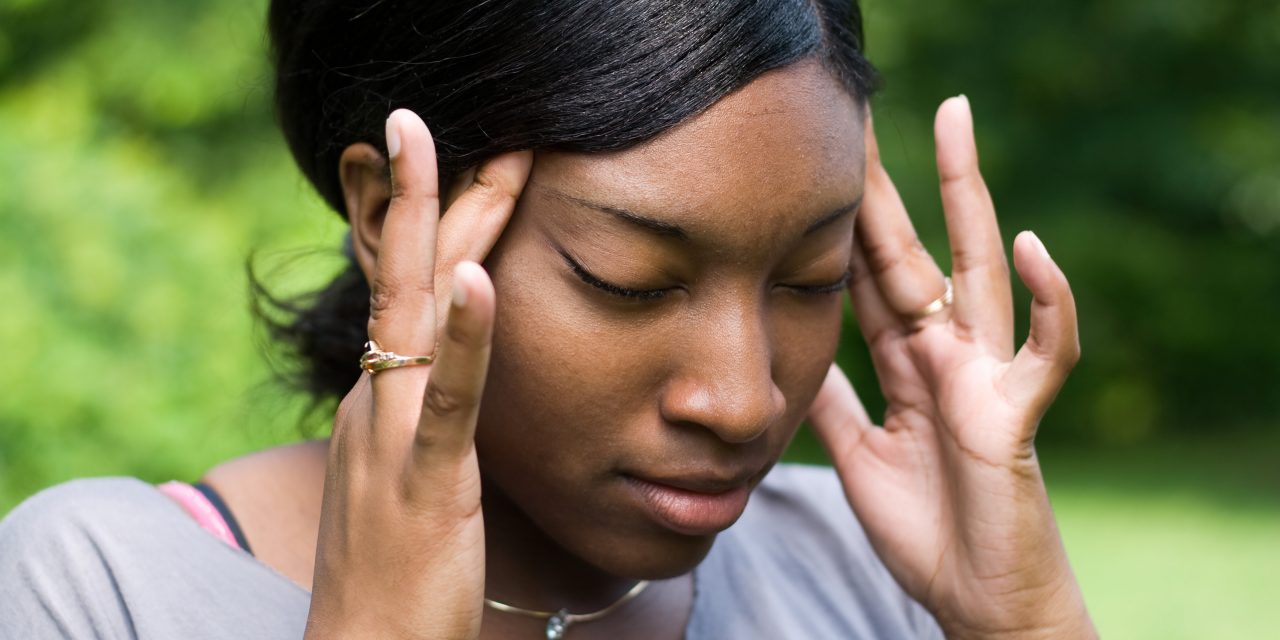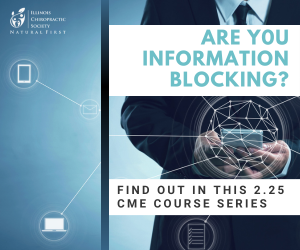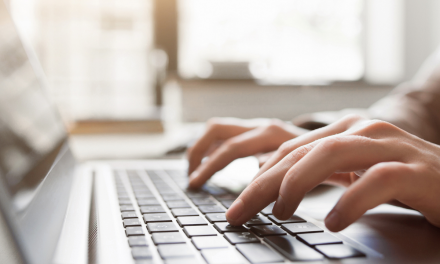
Deep Neck Flexor Weakness and Cervicogenic Headache

Headaches affect almost half of the population. 15-25% of all headaches are referred from the cervical spine and are classified as “cervicogenic” (1,36). The pathophysiology of cervicogenic headache (CGH) is debatable, but the anatomical basis is thought to be a convergence of sensory neurons from the cervical spine and trigeminal nerve in the trigeminocervical nucleus located in the upper cervical spinal cord. This convergence allows bidirectional referral of pain between the neck and head (2). Other less complex theories suggest mechanical irritation of the greater occipital nerve as it emerges from the suboccipital region.
The mean age for CGH is in the 40’s, and the condition affects women more often than men at a rate of 4:1 (1,3). CGH can be as debilitating as tension or migraine headaches but is compounded by a loss of cervical spine function. CGH is common in patients who have experienced trauma, especially a motor vehicle accident or an earlier concussion (4). The condition is more common in weightlifters (10).
Symptoms
CGH patients present with neck tenderness and stiffness. By definition, CGH is unilateral without side shift, but in some cases, the condition may present bilaterally. Moderate to severe pain may begin in the cervical spine and progressively affect the occipital, temporal, frontal or supraorbital regions. In some instances, the pain may affect the ipsilateral arm (5). Episodes of pain may last hours to days. The characteristic continuous, fluctuating pain is described as deep but generally not throbbing. Symptoms may be triggered or reproduced by sustained or awkward cervical spine postures (6).
Clinicians should be alert to findings that suggest a more threatening diagnosis including: headaches that are becoming progressively worse over time, sudden onset severe headaches, new and unfamiliar headache, headache following recent head injury, presence of fever, significant neck stiffness, rash, nuchal rigidity, facial numbness or paresthesia , vertigo, diplopia, drop attacks, difficulty speaking, difficulty swallowing, difficulty walking, nausea, extremity numbness or nystagmus.
Evaluation
Clinical evaluation of CGH reveals a range of motion loss, with the possible provocation of symptoms upon ipsilateral extension or rotation. The patient will likely report tenderness to palpation of the ipsilateral suboccipital musculature, the greater occipital nerve, and the affected facet joints. Trigger points may be found in the suboccipital, cervical and shoulder girdle musculature (7). The patient may report scalp paresthesia, but there are generally no significant neurologic findings associated with CGH (8).
CGH patients often demonstrate a loss of strength in the deep neck flexors and over-activation of the SCM and upper trapezius (8,9). Janda recommends screening for neck flexor weakness with the Neck Flexion Test (8). In this test, the supine patient is asked to lift their head several inches off of the table to look at their toes. The clinician observes for a “normal” movement pattern that would be initiated with a chin tuck and smooth reversal of the cervical lordosis. An “abnormal” screen would result in the chin moving forward into protraction from overcompensation by the SCM. The normal firing pattern for this movement is longus capitus, longus Colli, SCM and finally anterior scalenes. Abnormal movement patterns suggest weakness of the deep neck flexors.
The alternate Deep neck flexor endurance test can also help screen for weakness. (37,38) For this assessment, the patient begins in a supine, hook-lying position. The patient performs chin retraction then lifts their head an inch off the table. The clinician places their flat hand on the table below the patient’s occiput. If the patient’s head begins to lower or their anterior neck skin folds separate, they are reminded to “tuck your chin and hold your head up.” The test is timed until the patient’s head touches the clinician’s hand for more than one second. The average endurance for men is about 40 seconds and 30 seconds for women. Those with neck pain average closer to 20 seconds. Low times suggest neck flexor weakness with a predisposition to over utilize the SCM, platysma and hyoid, resulting in a forward head posture and neck pain.
Diagnosis
The most important clinical finding for the diagnosis of CGH is upper cervical spine restriction (12). Motion palpation reveals cervical restrictions in 63% of CGH patients and has good reliability (13). Assessment of intersegmental mobility can help differentiate between cervigogenic and other types of headaches. Lower cervical spine restrictions may also be a culprit, especially following trauma (14). Adjacent spinal regions should be assessed as Pavel Kolar has found that limited upper thoracic mobility leads to substitution with excessive extension in the upper cervical spine.
Co-existent myofascial problems are consistently present (15). Palpation of trigger points in the suboccipital, SCM, upper trapezius, levator, scalenes, pectoral and temporalis muscles often reproduces or intensifies symptoms (4,17). Clinicians should assess for upper crossed syndrome (weak cervical flexors, rhomboid and lower trapezius with hypertonic pectorals, suboccipital, and upper trapezius) and paradoxical breathing patterns that can activate shoulder and cervical trigger points.
Radiology
Although x-rays, advanced imaging, and lab tests may be needed to identify alternate diagnoses, their value is non-confirmatory and is of limited value for CGH patients (18). MRI has shown no demonstrable anatomic difference between CGH patients and asymptomatic subjects, including an equal prevalence of cervical disc lesions (12).
Differential diagnostic considerations for CGH include: “posterior fossa tumor, Arnold-Chiari malformation, cervical spondylosis, herniated intervertebral disc, spinal nerve compression or tumor, arteriovenous malformation, vertebral artery dissection, and spinal tumors” (19). Patients who are experiencing the early signs of VBAI may present with symptoms that mimic CGH. Clinicians should be attentive for other VBAI signs or symptoms.
Treatment
The successful management of CGH patients requires a multifaceted approach. Since CGH results from upper cervical joint dysfunction, spinal manipulation is a cornerstone of treatment. Several studies have demonstrated the effectiveness of spinal manipulation for CGH (21-25,28,35). Manipulation has been shown to be more effective than mobilization for the pain of cervical origin (26). Clinicians should assess for and treat associated restrictions in the lower cervical and thoracic regions as well.
Myofascial release and/or stretching may be needed in the suboccipital, SCM, upper trapezius, levator, scalenes, pectoral and temporalis muscles. Fascial adhesions in the connection between the suboccipital region and cervical dura may restrict normal upper cervical motion and may be released with IASTM. Caution should be exercised to avoid additional trauma to the greater occipital nerve as it emerges from the suboccipital region.
Conclusion
The combination of manipulation and an ongoing physical conditioning program has shown benefit for CGH patients (27,28). Postural correction may be necessary for “upper crossed syndrome” and breathing exercises are appropriate for those with dysfunctional respiration. Researchers have demonstrated benefit from a variety of neck and shoulder girdle strengthening including deep neck flexion, craniocervical flexion, shoulder abduction, shoulder retraction, lat pull-downs, biceps curls, bent-over rows and various pectoral strengthening (27,29,30,31,33).
Although some patients report palliative relief of CGH symptoms with NSAIDs, the medicinal management of CGH is generally ineffective (34).
References
1. Stovner L., et al. , The global burden of headache: a documentation of headache prevalence and disability worldwide. Cephalalgia, 2007. 27(3): p. 193–210
2. Bogduk N. The anatomical basis for cervicogenic headache. J Manipulative Physiol Ther. 1992;15:67-70
3. van Suijlekom HA, Lame I, Stomp-van den Berg SG, Kessels AG, Weber WE. Quality of life of patients with cervicogenic headache: a comparison with control subjects and patients with migraine or tension-type headache.Headache. 2003;43:1034-1041.
4. Treleaven J., Jull G., Atkinson L., Cervical musculoskeletal dysfunction in post-concussional headache. Cephalalgia, 1994. 14(4): p. 273–9; discussion 257.
5. Antonaci F., Sjaastad O., Cervicogenic headache: a real headache. Curr Neurol Neurosci Rep, 2011. 11(2): p. 149–55.
6. The Cervicogenic Headache International Study Group Diagnostic Criteria. (Modified from Biondi DM: Cervicogenic headache: mechanisms, evaluation, and treatment strategies. J Am Osteopath Assoc. 2000;100(9 Suppl): S7-14. Source: Sjaastad 0, Fredriksen TA, Pfaffenrath V. Cervicogenic headache: diagnostic criteria. Headache. 1998;38:442-445.)
7. Hall T, Robinson K. The flexion-rotation test and active cervical mobility—a comparative measurement study in cervicogenic headache. Man Ther. 2004;9:197-202.
8. Page P., Frank C.C., Lardner R., Assessment and treatment of muscle imbalance: The Janda Approach 2010, Champaign, IL: Human Kinetics.
9. Falla D.L., Jull G.A., Hodges P.W., Patients with neck pain demonstrate reduced electromyographic activity of the deep cervical flexor muscles during performance of the craniocervical flexion test. Spine (Phila Pa 1976), 2004. 29(19): p. 2108–14
10. Rifat S.F., Moeller J.L., Diagnosis and management of headache in the weight-lifting athlete. Curr Sports Med Rep, 2003. 2(5): p. 272–5.
11. Hall T.M., et al. , Comparative analysis and diagnostic accuracy of the cervical flexion-rotation test. J Headache Pain, 2010. 11(5): p. 391–7
12. Coskun O, Ucler S, Karakurum B, Atasoy HT, Yildirum T, Ozkan S, et al. Magnetic resonance imaging of patients with cervicogenic headache. Cephalalgia. 2003;23:842-845.
13. Hall T., et al. , Reliability of manual examination and frequency of symptomatic cervical motion segment dysfunction in cervicogenic headache. Man Ther, 2010. 15(6): p. 542–6
14. Hong J.P., et al. , Clinical assessment of patients with cervicogenic headache: a preliminary study. Chang Gung Med J, 2010. 33(1): p. 58–66.
15. Jaeger B., Are “cervicogenic” headaches due to myofascial pain and cervical spine dysfunction? Cephalalgia, 1989. 9(3): p. 157–64.
17. Bansevicius D., Sjaastad O., Cervicogenic headache: the influence of mental load on pain level and EMG of shoulder-neck and facial muscles. Headache, 1996. 36(6): p. 372–8
18. Fredriksen TA, Fougner R, Tangerud A, Sjaastad O. Cervicogenic headache: radiological investigations concerning head neck. Cephalalgia. 1989;9:139-146.
19. Biondi, DM. Cervicogenic Headache: A Review of Diagnostic and Treatment Strategies. J Am Osteopath Assoc April 1, 2005 vol. 105 no. 4 suppl 16S-22S
20. Haas M., et al. , Dose response for chiropractic care of chronic cervicogenic headache and associated neck pain: a randomized pilot study. J Manipulative Physiol Ther, 2004. 27(9): p. 547–53.
21. Koes, BW, Bouter LM, et al. “Randomised Clinical Trial of Manipulative Therapy and Physiotherapy for Persistent Back and Neck Complaints: Results of One Year Follow Up.” British Medical Journal, Volume 304, Number 6827, March 7, 1992, Pages 601-605.
22. Boline PD, Kassak K, et al. “Spinal Manipulation vs. Amitriptyline for the Treatment of Chronic Tension-type Headaches: A Randomized Clinical Trial.” Journal of Manipulative and Physiological Therapeutics, Volume 18, Number 3, March/April 1995, Pages 148-154.
23. Nilsson N., A randomized controlled trial of the effect of spinal manipulation in the treatment of cervicogenic headache. J Manipulative Physiol Ther, 1995. 18(7): p. 435–40,
24. Schoensee S.K., et al. , The effect of mobilization on cervical headaches. J Orthop Sports Phys Ther, 1995. 21(4): p. 184–96,
25. Nilsson N., Christensen H.W., Hartvigsen J., The effect of spinal manipulation in the treatment of cervicogenic headache. J Manipulative Physiol Ther, 1997. 20(5): p. 326–30.
26. Gross A., et al. , Manipulation or mobilization for neck pain: a Cochrane Review. Man Ther, 2010. 15(4): p. 315–33.
27. Biondi D. Physical treatments for headache: a structured review. Headache. 2005;45:1-9
28. Jull G, Trott P, Potter H, Zito G, Niere K, Shirley D, et al. A randomized controlled trial of exercise and manipulative therapy for cervicogenic headache. Spine. 2002;27:1835-1843.
29. Andersen L.L., et al. , Effect of brief daily exercise on headache among adults – secondary analysis of a randomized controlled trial. Scand J Work Environ Health, 2011.
30. Ylinen J., Physical exercises and functional rehabilitation for the management of chronic neck pain. Eura Medicophys, 2007. 43(1): p. 119–32.
31. Randlov A., et al. , Intensive dynamic training for females with chronic neck/shoulder pain. A randomized controlled trial. Clin Rehabil, 1998. 12(3): p. 200–10
33. van Ettekoven H., Lucas C., Efficacy of physiotherapy including a craniocervical training programme for tension-type headache; a randomized clinical trial. Cephalalgia, 2006. 26(8): p. 983–91
34. Bogduk N., Govind J., Cervicogenic headache: an assessment of the evidence on clinical diagnosis, invasive tests, and treatment. Lancet Neurol, 2009. 8(10): p. 959–68.
35. McCrory, Penzlen, Hasselblad, Gray. Duke Evidence Report (2001)
36. Racicki, S, Gerwin, S, DiClaudio, S, Reinmann, S, Donaldson, M. Conservative physical therapy management for the treatment of cervicogenic headache: a systematic review. JMPT Vol 21, Number 2, 2013 pp.113-124.
37. Domenech MA, Sizer PS, Dedrick GS, McGalliard MK, Brismee JM. “The Deep Neck Flexor Endurance Test: normative data scores in healthy adults.” PM R. 2011 Feb. Web. 08/18/2012.
38. Harris KD, Heer DM, Roy TC, Santos DM, Whitman JM, Wainner RS. “Reliability of a measurement of neck flexor muscle endurance.” Physical Therapy 2005 Dec. Web. 08/18/2012.

















